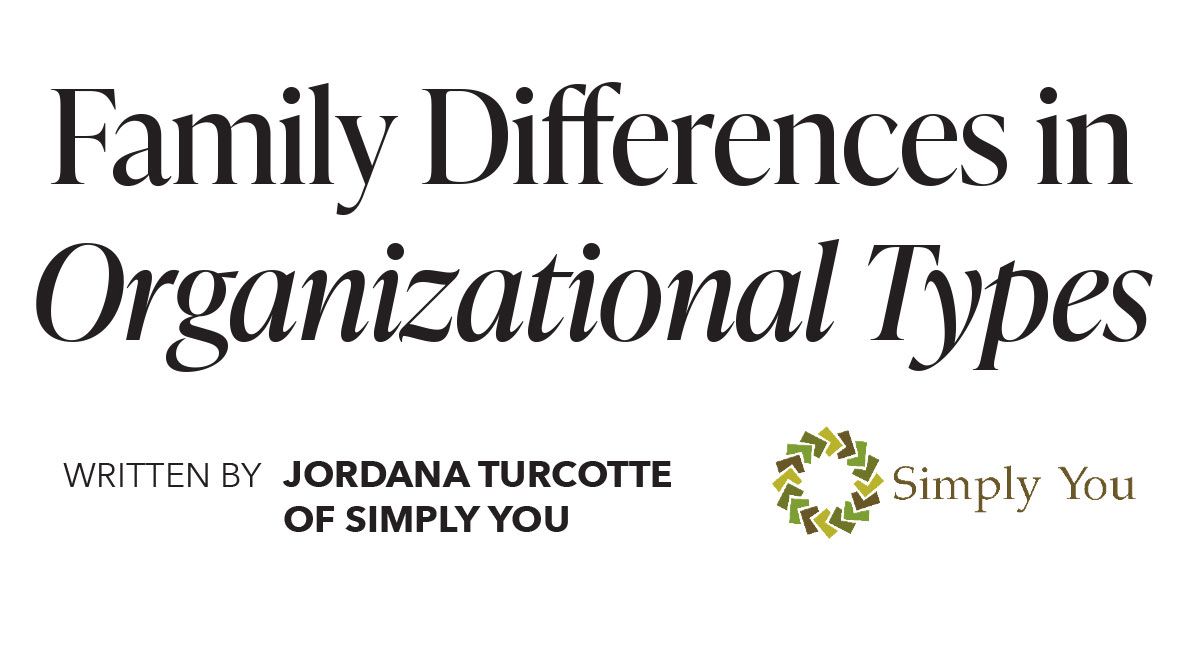
We all have our own systems, preferences in how we put things away; likes and dislikes in managing stuff. There really is no “right” way to organize as long as you can find what you want when you need it and each room or area functions as intended.
What causes problems within homes is the clash of organizational styles. Someone in the family may like piles out and things accessible, and another may like stuff in drawers with clean surfaces. I find this to be the biggest battle in families; varying styles in how they organize.
Battles can be over things not “cleaned up” to the standards of the other or one person moving the other’s items because they want it out of the way. The timing of when things are dealt with may also not be fast enough for the other person. Poor communication and unequal expectations are the main reasons for these household issues.
The first solution is to identify how you like to organize and how you like to keep things. Each family member should do the same. Then, a household meeting should take place. Communication and understanding can solve most problems. One example is placement of the new mail. Just saying why you want it placed in a different spot may be all is needed for the person bringing it in to change where they drop it. Really.
Varying organization levels can and do work fine in many homes. The key is to plan for the differences. Accommodating versus trying to force someone to do something they really can’t do is a futile battle. Some great examples of how you can make differences work is giving each person their own drop zone, in-box or the like. If someone is a “stuffer,” give them a drawer! If someone is a pile person, give them a flat surface that is an ok place for those piles (indefinitely.)
Keeping area’s “up” to house standards may fall more on one person than others, but it’s always best to assign jobs to all. Establishing the rule that if an item is left in the wrong spot, it will be placed in that person’s bin can help a lot. If a family member doesn’t see it where they left it, they should check their bin first. This becomes a maintenance system. How the bin is maintained by the owner is their prerogative. This highlights how clear communication can navigate things that may strain relationships in varying styles of organization.
Now, it is fair to say that there may be no organization going on at all. It may be a free-for-all for many family members and many things. Only 15% of people are born with the organizing gene, everyone else must work at it!
So, whether or not you are a piler, a stuffer or a lucky type A – just remember, everything must have a home, and it must live there.